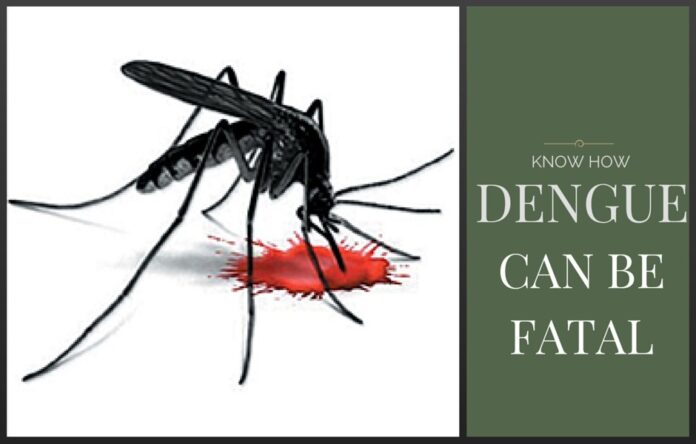
PerformanceGurus Staff
New Delhi
Dengue has once again raised its ugly head during the ongoing spell of monsoon. Every person with a even a common fever is rushing to hospitals to rule out dengue infection. However, there is no need to panic since 99% of the dengue cases are non-fatal. .
Dengue fever is a painful mosquito-borne disease. It is caused by any one of four types of dengue virus, which is transmitted by the bite of an infected female Aedes aegypti mosquito. Common symptoms of dengue include high fever, runny nose, a mild skin rash, cough, and pain behind the eyes and in the joints. However, some kids may develop a red and white patchy skin rash followed by loss of appetite, nausea, vomiting, etc. Patients suffering from dengue should seek medical advice, rest and drink plenty of fluids. Paracetamol can be taken to bring down fever and reduce joint pains. However, aspirin or ibuprofen should not be taken since they can increase the risk of bleeding.
The risk of complications is in less than 1% of dengue cases and, if warning signals are known to the public, all deaths from dengue can be avoided. A platelet transfusion is not needed if the platelet counts are more than 10,000. Unnecessary platelet transfusion can cause more harm than good
“Dengue is both preventable and manageable and people must not panic since fatality only occurs in 1% of the cases. Plasma leakage is the most specific and life-threatening feature of dengue which occurs three to seven days after the onset of the illness. The presence of intense abdominal pain, persistent vomiting, and marked restlessness or lethargy, especially coinciding with defervescence are the red flag symptoms and a chest radiography and chest/abdominal ultrasound are useful for detection of plasma leakage. Taking necessary precautions and acting in a timely fashion is key to eliminate fatality in dengue cases. For all patients, staying well hydrated is strongly advised”.
– Padma Shri Awardee, Dr K K Aggarwal, President Heart Care Foundation of India and Honorary Secretary General IMA
In cases of plasma leakage, the increase in vascular permeability develops over a period of 24 to 48 hours. Shock may develop in patients with marked plasma leakage, especially if supportive treatment is delayed and is associated with case-fatality rate of 12 percent. Abdominal pain is also reported to precede the onset of plasma leakage in approximately 60 percent of patients with dengue.
Plasma leakage is important to manage with intravascular volume repletion to prevent or reverse hypovolemic shock. In mild cases, particularly when medical attention is received early, oral rehydration may be sufficient. However, in patients with established intravascular volume loss, intravenous fluid administration is recommended. Blood transfusion is appropriate in patients with significant bleeding or those who have low hematocrit and fail to improve despite fluid resuscitation.Platelet transfusions have not been shown to be effective at preventing or controlling hemorrhage but may be warranted in patients with severe thrombocytopenia (<10,000/mm3) and active bleeding. Physicians should remember the ‘Formula of 20’ i.e. rise in pulse by more than 20; fall of Blood pressure by more than 20; difference between lower and upper BP less than 20 and presence of more than 20 hemorrhagic spots on the arm after a tourniquet test suggest a high risk situation and the person needs immediate medical attention. The onus of preventing dengue lies with the public and not with the Government authorities. The dengue mosquitoes are found only in water collected outside the house and not in dirty water in the drains.
- Supreme Court rejects plea to tally all VVPAT slips with EVM votes; says ‘no going back to paper ballot’ - April 26, 2024
- US report citing human rights violations is deeply biased: India - April 25, 2024
- Kotak Mahindra Bank shares tank 13%. Market Cap erodes by Rs.37,721 cr post-RBI action - April 25, 2024







